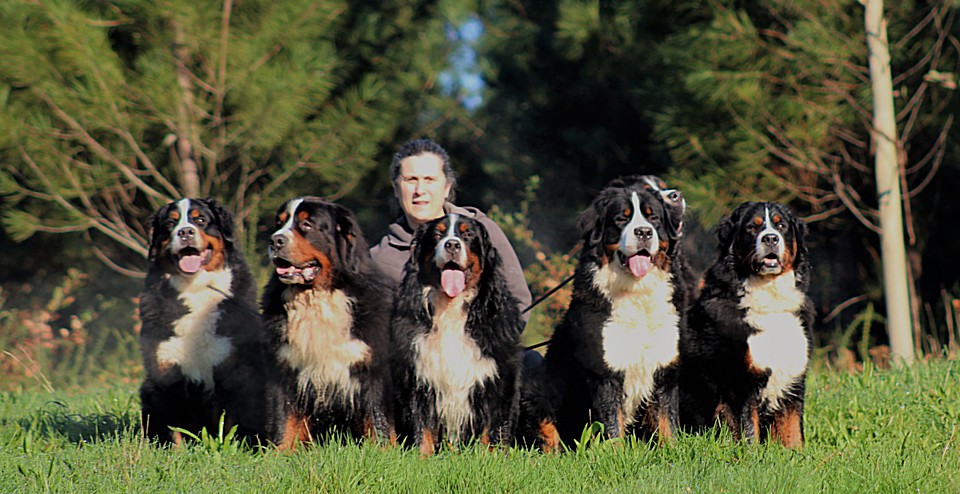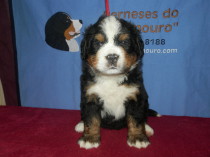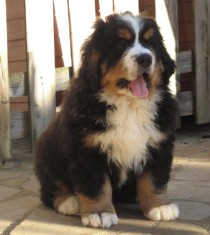
Our Breeding program
FIRST PRINCIPLE OF RESPONSIBLE BREEDING: SELECT DOGS AND BITCHES MOST SUITABLE FOR BREEDING
1) Making the breeding of the BMD with long-lived lines. In our breeding program we have decided to take as a starting point BMD long-lived bloodlines. The result has been to get dogs whose ancestors outperform the average in their life expectancy. In each of our dogs, you can see his lineage up to 9 generations, with identification of age and cause of death in most of them. Our dogs are included in the databases of the Berner Garde Foundation and Ingrus and have their DNA deposited in the database of the RSCE.
2) Making the BMD breeding with hereditary nature disease-free lines, and particularly of malignant Histiocytosis. We do constant monitoring of relatives of our dogs to detect the degree of incidence of this disease and other types of cancer in them.
3) Making the BMD breeding with lines that have good structure and morphology. Some structural problems of the BMD end up affecting their quality of life. The structure of the BMD has a high component of heritability
4) We select for breeding those dogs that are conform to the breed standard and complementing each other, so they will transmit their virtues. So, their offspring will be as correct as possible.
SECOND PRINCIPLE OF RESPONSIBLE BREEDING: EXAMINATION OF THE SPECIMENS.
Once we have selected the BMD to our breeding program, before the mate, we check:
1) They meet the requirements of the CEPBB, the RSCE and the FCI breeding rules, as well as their respective ethics codes. In particular
2) Aproved Testing of hip and elbow not before 18 months
3) They should have the right age. While the breeding of the CEPBB regulations designates as the minimum age 18 months and maximum of 7 years, in Pormouro we do not have litters with females under 24 months. This is done to ensure that it has reached its full emotional and physical development.
4) At least 3 international FCI judges may have considered them EXCELLENT dog
5) We will endeavour to get a rapport drafted by a prestigious specialist breed recognized for each of our breeding dogs.
6) They should not have at the time of the mate any kind of disease. Before the mate, the dogs shall be subject to a veterinarian review. We will not use for breeding any dogs showing diseases or abnormalities that could endanger their lives, not that of the future puppies, or cause problems in childbirth, or be susceptible to convey some sort of disease, either by infection or by inheritance.
THIRD PRINCIPLE OF RESPONSIBLE BREEDING: WHEN THE PUPPIES ARE BORN.
1) Pups have a rigurous program of veterinary control including revisions since its birth, vaccinations and deworming, monitoring and action on issues that they could have.
2) Food. We carry out a rigurous control of weight and every puppy´s food since its birth, with weighing of each puppy several times a day during the first weeks of life. We check that each puppy is fed properly, complementing possible shortcomings of breast milk.
3) Provide standards in imprimting and socialization for the rest of his life. We perform stimulation exercises and guidelines for adaptation to environment and interaction with other dogs and humans.
4) Find humans suitable for puppies' future development that allows them to grow and live in an environment that guarantees them a great quality of life.
5) Provide guidelines for the correct development of the puppies in the field of food, exercise, socialization, and any other circumstance that is accurate.
6) Inform honestly to each new owner about the features of their new Bernese mountain dog. We will provide the information that affects or may affect the same future buyers. In addition, we will make our assessment of each of the puppies, honestly, about their suitability for breeding, exhibition, company, strong and weak points they could have, etc.
FOURTH PRINCIPLE OF RESPONSIBLE BREEDING: ONCE IN ITS NEW HOME
1) Maintain contact with the owners of our dogs to provide them the information and support they need for a better development of them.
2) Track and gather information on aspects of health, growth, etc.
3) Feedback process to decide if the breeding dogs remain still being used as such.



